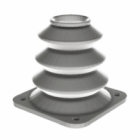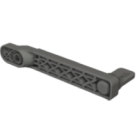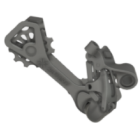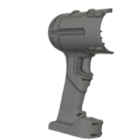How does 3D printing work? Basic idea and principles
At its core, 3D printing — also known as additive manufacturing — is about transforming digital files into solid, physical objects by building them up layer by layer. Unlike traditional manufacturing methods that subtract material (like milling or cutting), 3D printing adds only what’s needed, where it’s needed.
But how does 3D printing work, really? What actually happens inside the machine after you hit “print”? Let’s break it down step by step — from file preparation to the physical formation of a part.
The process starts with a 3D model — usually created in CAD software or downloaded as an STL file. This model is then sent through a slicer, which digitally divides it into thousands of horizontal layers. The slicer generates a set of instructions (usually G-code) that tells the printer exactly how to build each layer.
Step-by-step: what happens inside a 3D printer
Before printing begins, the machine calibrates its motion system, heating elements (if any), and position of the print head or laser. Precision here is critical — even a minor offset can compromise the entire build.
Layer-by-layer deposition or fusion
This is the heart of the process. Depending on the technology, the printer will either:
- extrude melted thermoplastic (FDM),
- cure liquid resin using UV light (SLA/DLP),
- fuse powdered material with a laser (SLS or DMLS).
Each layer adheres to the previous one, slowly building up the 3D shape from the bottom up.
Cooling, curing, or consolidation
After each layer is deposited or solidified, the material needs to cool or stabilize before the next one is added. Advanced systems manage thermal gradients and mechanical stress in real time to ensure dimensional accuracy.
Completion and part removal
Once all layers are built, the part is removed — sometimes still embedded in powder (SLS), floating in resin (SLA), or fixed to a print bed (FDM). Some post-processing (e.g. curing, cleaning, support removal) may follow before the part is fully functional.
How different 3D printing technologies work
The answer to how 3D printing works depends on the technology used. Each method applies the layer-by-layer principle differently:
- FDM (Fused Deposition Modeling) melts plastic filament through a heated nozzle and deposits it linearly. It’s a mechanical process driven by stepper motors, extrusion gears, and cooling fans.
- SLA/DLP (Stereolithography / Digital Light Processing) cures liquid photopolymer resin using a light source — either a laser (SLA) or projected image (DLP). Precision is controlled by optics, mirrors, and exposure timing.
- SLS (Selective Laser Sintering) spreads a thin layer of nylon powder and selectively sinters it with a high-powered laser. The unused powder supports the part during printing and can be reused.
- DMLS / SLM (metal printing) operate similarly to SLS but with metal powders and significantly higher temperatures. Inert gas environments are used to prevent oxidation during the build.
Understanding these internal mechanisms is key to mastering print quality and predicting potential errors.
What role software and firmware play in 3D printing
Behind every print is a tightly orchestrated interaction between hardware and software. The slicer generates toolpaths, but it’s the printer’s firmware — like Marlin, Klipper, or proprietary controllers — that translates G-code into synchronized movements, temperature regulation, and extrusion control.
Real-time monitoring systems adjust parameters dynamically, such as speed, flow rate, or cooling — especially in professional machines. In high-end setups, the 3D printing working process involves feedback loops, PID tuning, and even AI-based layer inspection.
Why understanding the process improves your results
Knowing how 3D printing technology works isn’t just for engineers. It helps users troubleshoot print failures, optimize settings, and better match technology to application. Whether you’re tuning retraction for FDM or adjusting scan speed in SLS, a deep understanding of the working principles unlocks higher-quality parts — and fewer surprises.
And as new hybrid technologies emerge — combining multi-material extrusion, real-time curing, or even robotics — the core principle remains the same: precise control over material in three-dimensional space, executed one layer at a time.
Explore also
- What is print 3D? Concept of 3D printing
- What does “3D printed” mean?
- Example of 3D printing
- Slicing in 3D printing
- What do you need for 3D printing?
- 3D printing benefits
- Is 3D printer dangerous? Understanding the real risks
- 3D printing issues
- 3D printing history
- 3D printing facts
- Who uses 3D printers? Not just for engineers anymore
- Where 3D printing is used
- 7 common 3D printing myths
Related categories













